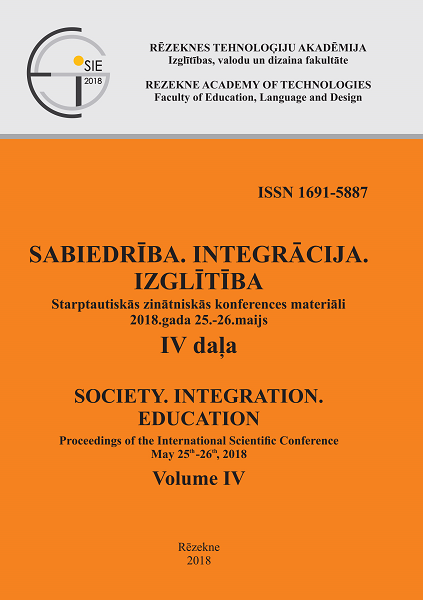GRAPHIC DESIGN OPPORTUNITIES FOR INTEGRATED APPROACH IN MUSEUMS IN REPRODUCTION OF ART TREASURES
DOI:
https://doi.org/10.17770/sie2018vol1.3375Keywords:
graphic design, tactile graphics, tangible perception, visual impairment, integrated approachAbstract
Latest tendencies in museum accessibility, both in the world and in Latvia, show that the social status of museums is changing from a cultural institution for a narrow circle of interested persons to a meeting place open to society, accessible both intellectually and physically to different social groups. The research aim is to study the opportunities for the use of graphic means to disclose and give access to the collection of artistic property of Latgale Culture and History Museum (LCHM) to persons with vision impairment. With the information summarised, the authors invite to use the opportunities of graphic design and technologies in the creation of art reproductions, making the graphic image of the painting perceptible by touch, i.e. tactile, and thus accessible to persons with visual impairment. The novelty of the research on the scale of Latvia will be a supplement of tactile images to the album of the collection of art reproductions of LCHM, which includes tactile graphic images and corresponding descriptions in Braille for persons with vision impairment. At this stage of the research, empirical methods were used – interview and practical activity.The aim of the research: Study and research graphic design opportunities for the integrated approach in museums in the reproduction of existing art property to ensure its accessibility to persons with vision impairment, analyse the needs of the visually impaired in cooperation with societies and organisations in Latvia and design a scheme of practical activities for persons with vision impairment.
References
Alvarez, A. (2005). Please Touch: The Use of Tactile Learningin Art Exhibits, presented at the J.Paul Getty Museum Symposium, “From Content to Play: Family-Oriented Interactive Spaces in Art and History Museums”. June, 4-5.
Bite, G. (2012). Brīvprātīgie un dieguburti. Skatīts 08.09.2015. Pieejams: www.neredzigobiblioteka.lv.
Dundure, I., & Apele, D. (2016). Mākslas vērtības muzejos un to pieejamība cilvēkiem ar redzes traucējumiem. Māksla un mūzika kultūras diskursā. V starptautiskās zinātniski praktiskās konferences materiāli, 33.-43.
Fleming, D. (2013). The Social Role of Museums. In I. Zelča-Sīmansone (Eds.), Museums and Intercultural Dialogue. The Learning Museum Network Projekt Report Nr.4 (pp. 57-69). Riga: Mantoprint.
Hmeļevska, V. (2013). Taktilā grāmata: kam un kādēļ tāda vajadzīga? Pieejams: http://www.ubisunt.lu.lv/zinas/t/21983/
Landra, T. (2015). Kā saprast citādo.Nepublicēts apmācības kursu materiāls.
Landra, T., & Tūbele S. (2011). Taktilās grafikas tehnoloģijas un to lietojums Eiropā, ASV un Latvijā. Latvijas Universitātes raksti 759. sējums. Pedagoģija un skolotāju izglītība, 88.-100. lpp.
Slimību profilakses un kontroles centrs: Latvijas veselības aprūpes statistikas gadagrāmata. (2016). Pieejams:http://www.spkc.gov.lv/lv/statistika -un-petijumi/statistika/latvijas-veselibas-aprupes-sta1/get/nid/9






